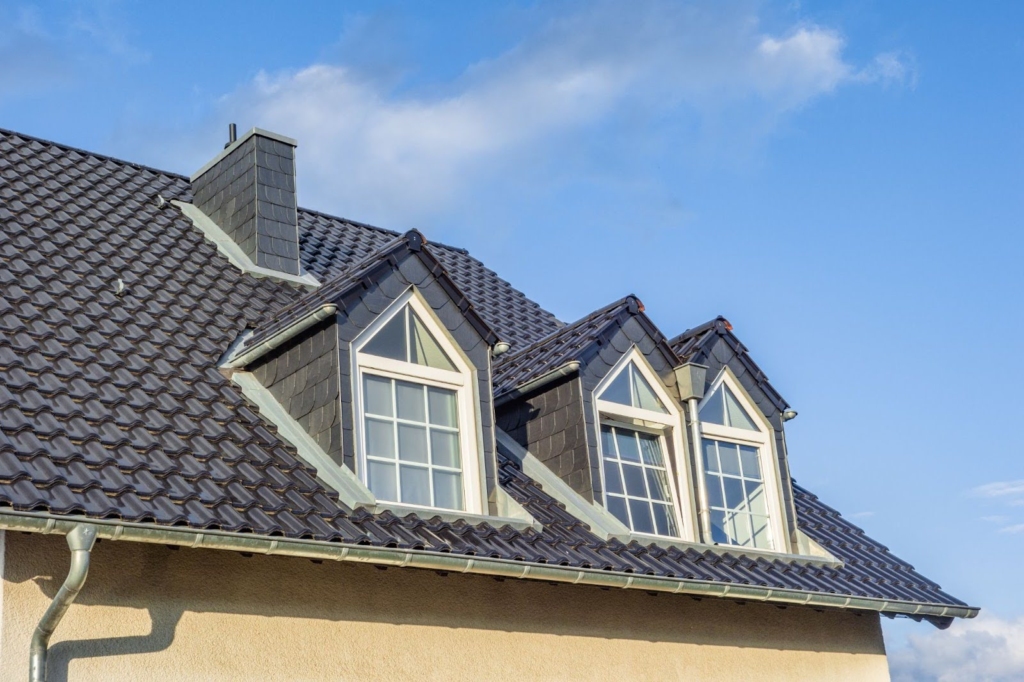Your roof is one of the most important components of your home’s structure. It provides essential protection from the elements and helps maintain the energy efficiency, comfort, and safety of your living space. However, no roof lasts forever. Damage from weather, falling debris, or simple aging materials eventually requires attention. Understanding the roofing repair process—from the initial inspection to the final completion—can help you prepare for what lies ahead, communicate more effectively with contractors, and ensure the best possible outcome for your property.
Step One: The Roof Inspection Process Begins It All
A professional roof inspection is always the first step in the repair process. During this phase, a licensed contractor will assess the condition of your roofing system, looking for signs of wear, damage, or structural weakness. They may inspect from the ground using binoculars, climb onto the roof, or even use drones or infrared tools to detect hidden moisture and heat loss. Inspections aren’t just visual—they involve checking the integrity of flashing, gutters, shingles, vents, and underlayment. Once the evaluation is complete, the contractor will present a report outlining the scope of the damage, recommended repairs, and a rough cost estimate.
Step Two: Roofing Repair Quotes and Planning
After the inspection, you’ll receive a detailed quote that includes labor, materials, project timeline, and contingencies. This quote provides an opportunity for you to ask questions about the proposed work, confirm warranty coverage, and address any concerns regarding insurance or permits. Depending on the severity of the damage, the quote may include simple shingle replacement or more extensive structural repairs. A reputable roofing contractor will help you understand every item in the proposal and will often provide options tailored to your budget and urgency. Once you’ve reviewed and approved the estimate, the project can be scheduled.
Step Three: Preparing the Site for Roofing Repair
Before actual repairs begin, the job site must be prepared to ensure safety and efficiency. Your roofing team will deliver materials, set up ladders and scaffolding, and protect surrounding areas—such as landscaping, driveways, or air conditioning units—from falling debris. Depending on the scope of work, this phase may also include placing tarps, removing old roofing materials, or installing temporary coverings to protect open sections of your roof. Proper site prep minimizes delays and ensures a smooth repair experience from start to finish.
Step Four: Executing the Roofing Repair
With everything in place, the repair work begins. This step varies depending on the damage being addressed—contractors might replace missing shingles, seal flashing, repair underlayment, or reinforce the roof deck. Each repair is carried out in accordance with industry standards, local building codes, and manufacturer specifications. Weather permitting, roofing teams work quickly and efficiently, keeping the repair area clean and checking all adjacent sections for potential weak spots. Quality contractors document the process with photos to show before-and-after conditions for your records or insurance needs.
Step Five: Post-Repair Inspection and Final Touches
Once the repair is complete, a thorough post-work inspection ensures everything has been done correctly and nothing has been overlooked. Contractors will review the work with you, answer any questions you may have, and ensure you’re satisfied with the result. They may also examine surrounding areas for incidental damage and double-check that all components—such as flashing, vents, and gutter connections—are properly sealed. Cleanup is also part of this phase, with crews removing all debris and leftover materials and ensuring that nails and fasteners are collected from around your home.

Common Types of Roofing Repairs Explained
Not all roofing repairs are the same. Some are simple and localized, while others involve multiple components or urgent intervention. Below are the most common types of roofing repairs that professionals encounter during service calls.
Shingle Replacement
Shingle replacement is the most common repair, often needed after high winds or storm damage. Shingles may be cracked, curled, or completely missing, compromising the waterproof layer beneath.
Flashing Repairs
Flashing—thin metal installed around chimneys, vents, or valleys—can crack, rust, or come loose. Repairing or resealing flashing prevents water from seeping into your attic or walls.
Leak Patching and Underlayment Repair
Leaks may not originate where you see the stain inside your home. Roofers often replace or reinforce underlayment layers and install water barriers to stop leaks at the source.
Gutter and Drainage Repairs
If gutters or downspouts are damaged or clogged, water may pool on your roof, causing rot. Gutter repair is often included as part of a larger roofing project.
Structural Reinforcement
In severe cases, especially with older roofs, structural elements such as decking, rafters, or trusses may require repair or replacement to ensure the roof system is safely supported.
Understanding Timelines for Roofing Repairs
The length of your roofing repair project depends on the scope of work, weather conditions, and contractor availability. Minor repairs can be completed in a day, while larger repairs may take several days, especially if decking or underlayment must be replaced. Weather delays are common in colder or wetter climates, and unexpected issues—like hidden rot or pest damage—can extend the timeline. A good contractor will keep you updated daily and offer realistic timeframes. Planning, especially during peak roofing seasons in spring and fall, helps avoid scheduling bottlenecks.
How Roofing Repairs Differ From Roof Replacement
It’s essential to understand when a repair is appropriate and when a full replacement is a more prudent long-term investment. If your roof is relatively new and the damage is localized, repairs are typically sufficient. However, if the damage is widespread or your roof is nearing the end of its life expectancy (usually 20–30 years for asphalt shingles), repairs may only offer a short-term solution. A roofing contractor will assess the age, material condition, and structural integrity of your roof to guide you. Repairing repeatedly may cost more over time than a well-planned replacement.
Insurance and Permits in the Roofing Repair Process
Depending on the cause and extent of the damage, your homeowner’s insurance may cover part or all of the roofing repair. Storm damage, falling trees, and accidental impacts are commonly covered causes. Your contractor can help document the damage, work with insurance adjusters, and ensure all paperwork is submitted properly. In many areas, permits are also required for anything beyond minor repairs. Reputable contractors handle permit applications and ensure the work is compliant with all local building codes, helping you avoid future inspection issues.
What to Look for in a Roofing Repair Contractor
Choosing the right contractor is crucial for a successful roofing repair. Look for licensed and insured professionals with strong customer reviews and a portfolio of completed projects. A reliable contractor will provide a detailed estimate, use high-quality materials, and offer warranty coverage for both labor and products. They should be transparent about the process, timeline, and any potential obstacles that may arise. Avoid contractors who offer vague pricing or push full replacements without properly assessing the damage. Experience, communication, and accountability are key traits to prioritize.
Long-Term Maintenance After Roofing Repairs
Once your roof has been repaired, preventative maintenance is the best way to protect your investment. Schedule periodic inspections—ideally in spring and fall—to catch minor issues early. Keep your gutters clean, trim overhanging branches, and watch for signs of water damage or loose shingles. If your area experiences frequent storms, consider an annual roof check or adding impact-resistant materials. A well-maintained roof lasts longer, performs better, and reduces the risk of surprise repairs down the line.

A Smooth Roofing Repair Starts With the Right Process
Understanding the roofing repair process—from inspection to completion—gives you the knowledge to make informed decisions, avoid common pitfalls, and ensure your home is well protected. From the initial inspection of damaged shingles to the final cleanup and inspection, each step matters. Working with a qualified roofing contractor helps streamline this process and ensures your roof is repaired to last. Whether you’re dealing with storm damage, aging materials, or leaks, approaching the project with preparation and the right partner guarantees stronger results and lasting peace of mind.
Visit our NorthCoast Roofing Inc. blog to learn more about our roofing services and more for your property!

